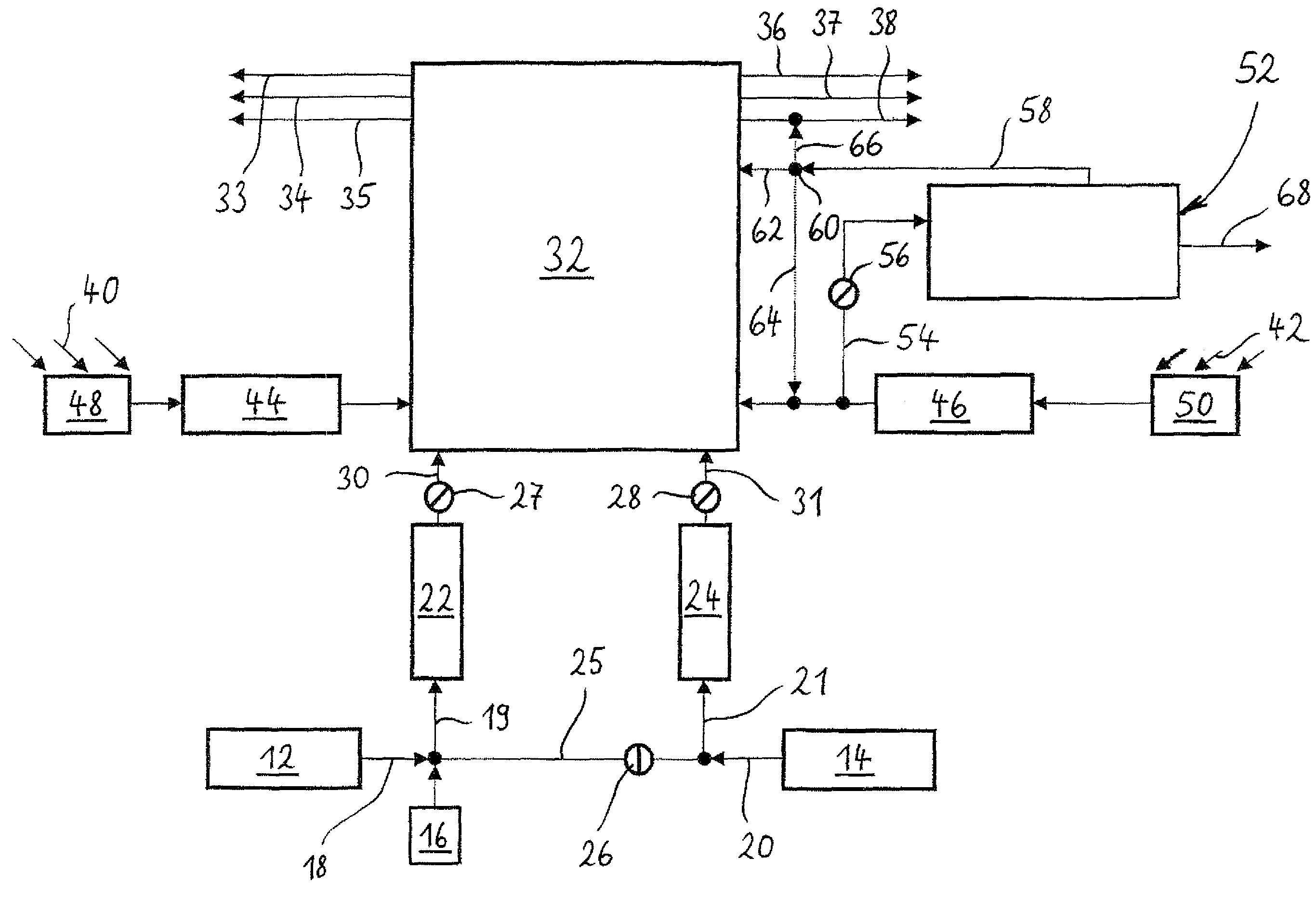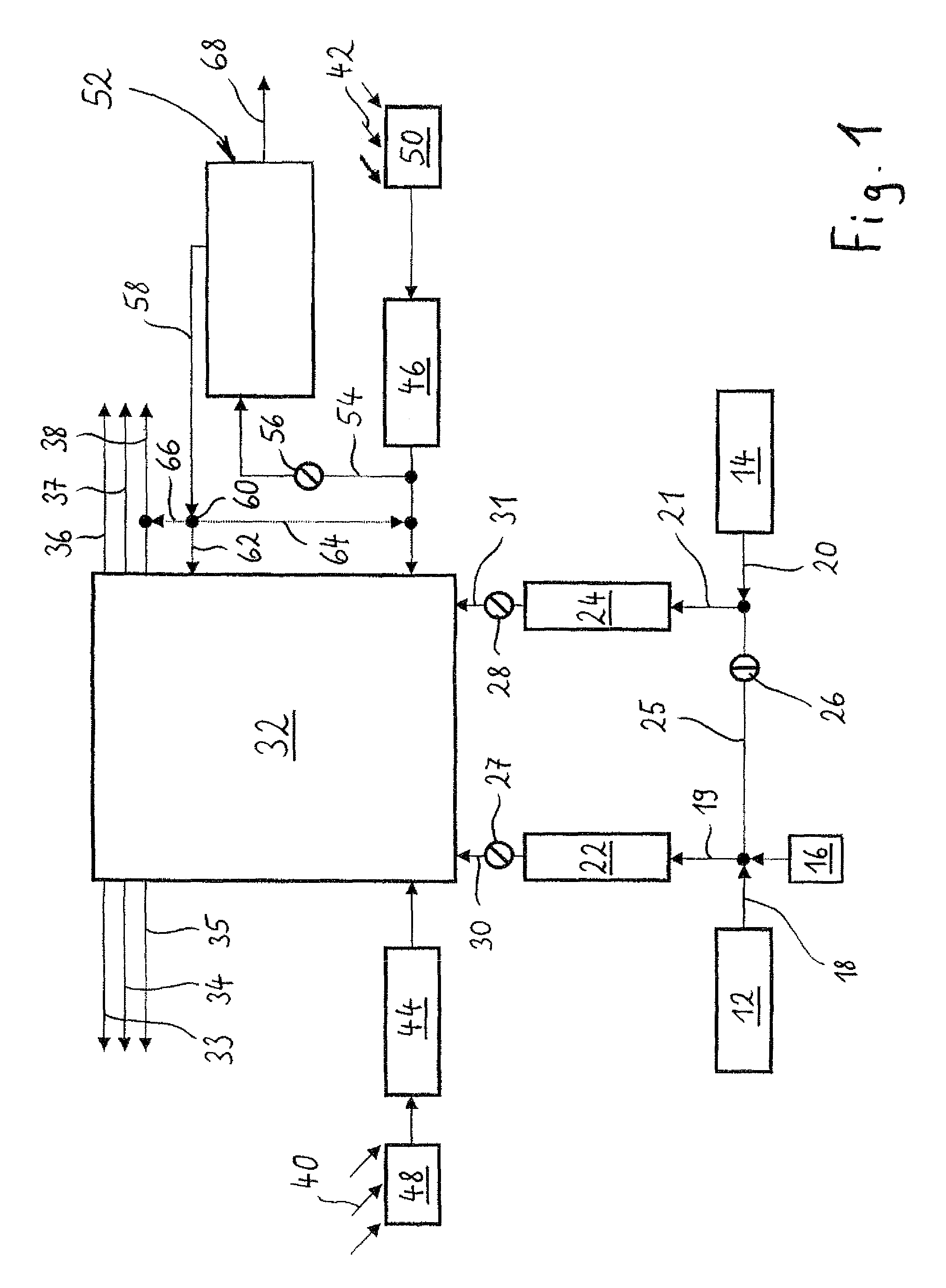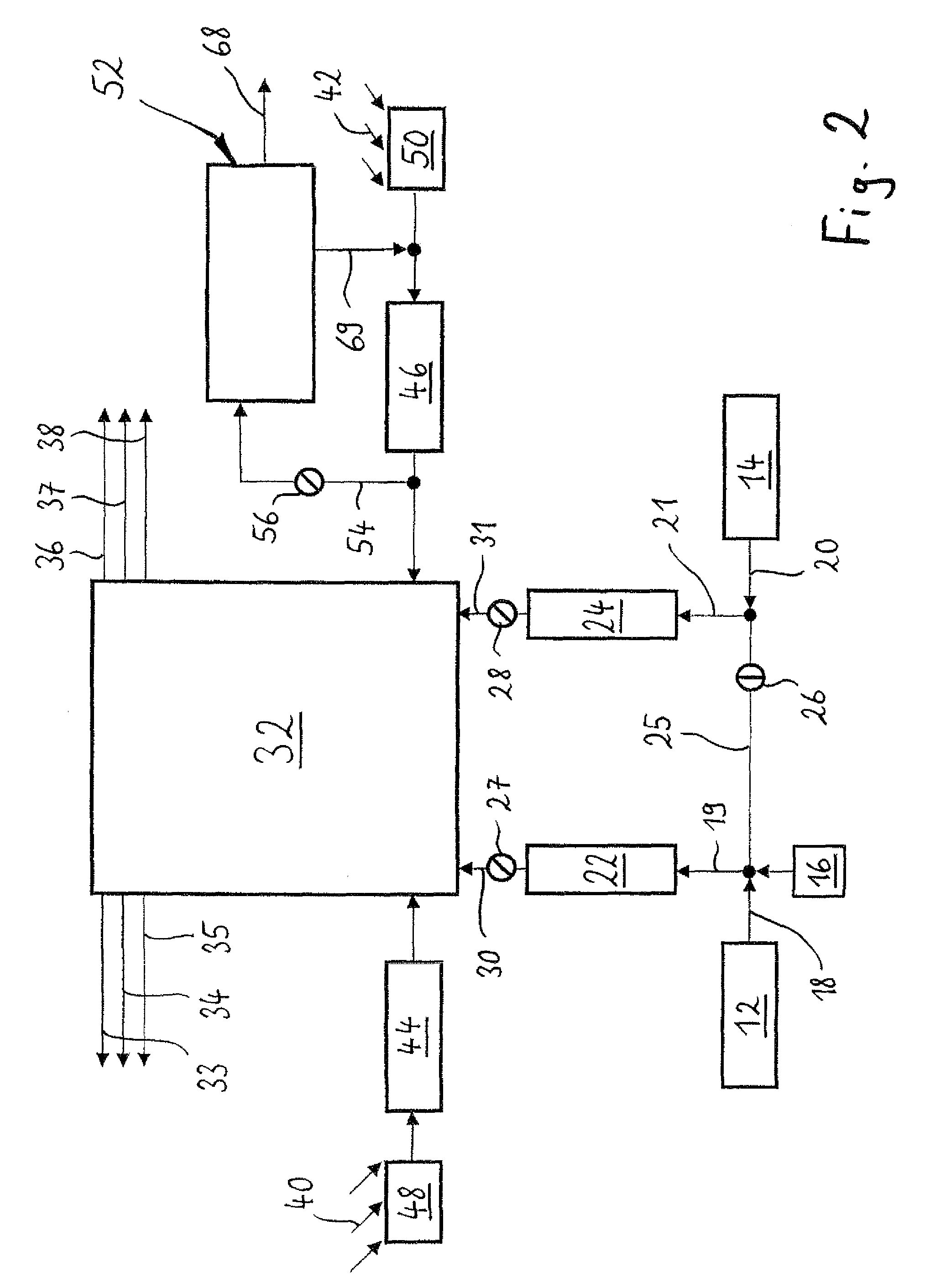System for improving air quality in an aircraft pressure cabin
a technology for air quality and pressure cabin, which is applied in the direction of aircraft crew accommodation, energy-saving board measures, respirators, etc., can solve the problems of affecting comfort, reducing the oxygen partial pressure in the aircraft cabin, and increasing the fuel consumption of the engin
- Summary
- Abstract
- Description
- Claims
- Application Information
AI Technical Summary
Benefits of technology
Problems solved by technology
Method used
Image
Examples
Embodiment Construction
[0022]FIG. 1, which shows a first embodiment, relates to an aircraft which has two engines 12, 14 and an auxiliary power unit 16, although it is self-evident that the basic operation of the system does not depend on the precise number of engines or on the presence of an auxiliary power unit.
[0023]To pressurise the cabin of the aircraft (not further illustrated here), bleed air from the engine 12 and / or the engine 14 and / or the auxiliary power unit 16 is supplied to two air-conditioning units 22, 24 via lines 18, 19 and 20, 21. A connecting line 25 in which a stop valve 26 is arranged is used to supply bleed air from the engine 12 and / or the auxiliary power unit 16 simultaneously to both air-conditioning units 22, 24 or to supply air from the engine 14 simultaneously to both air-conditioning units 22, 24 With the stop valve 26 closed the air-conditioning unit 22 is supplied with bleed air only from the engine 12 and / or the auxiliary power unit 16, while the air-conditioning unit 24 i...
PUM
 Login to View More
Login to View More Abstract
Description
Claims
Application Information
 Login to View More
Login to View More - R&D
- Intellectual Property
- Life Sciences
- Materials
- Tech Scout
- Unparalleled Data Quality
- Higher Quality Content
- 60% Fewer Hallucinations
Browse by: Latest US Patents, China's latest patents, Technical Efficacy Thesaurus, Application Domain, Technology Topic, Popular Technical Reports.
© 2025 PatSnap. All rights reserved.Legal|Privacy policy|Modern Slavery Act Transparency Statement|Sitemap|About US| Contact US: help@patsnap.com



